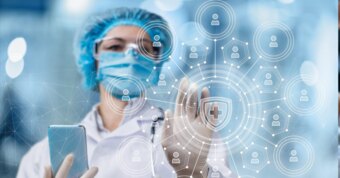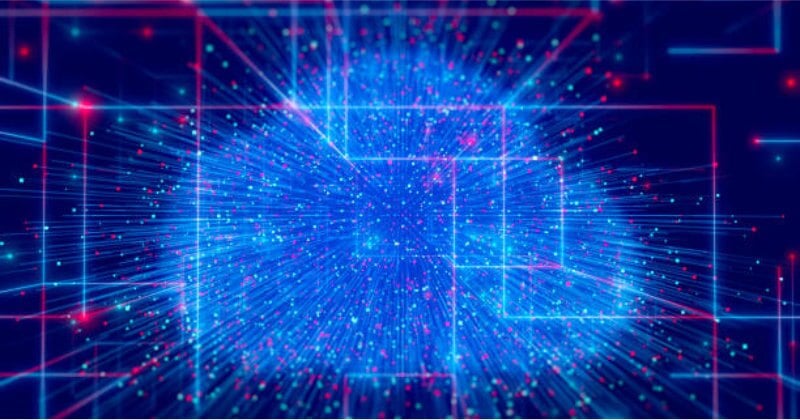The integration of medical diagnostics software in India is revolutionizing healthcare by enhancing diagnostic accuracy, improving efficiency, and increasing accessibility, particularly in remote and underserved areas. Leveraging advanced technologies such as artificial intelligence (AI), machine learning (ML), and big data analytics, these software solutions are transforming the landscape of medical diagnostics in India. Here's a comprehensive look at how medical diagnostics software is revolutionizing healthcare in India.

1. Enhanced Diagnostic Accuracy
Medical diagnostics software is significantly improving the accuracy of diagnoses, helping to identify diseases earlier and more reliably:
-
AI-Powered Imaging: AI algorithms analyze medical images like X-rays, MRIs, and CT scans, identifying patterns and anomalies that might be missed by human eyes. For instance, AI systems can detect early signs of diseases like tuberculosis and cancer, which are prevalent in India.
-
Data Integration: These tools integrate data from various sources, such as electronic health records (EHRs), lab results, and genetic information, to provide a comprehensive view of a patient's health, leading to more accurate diagnoses.
2. Improved Efficiency and Speed
Medical diagnostics software enhances the efficiency and speed of the diagnostic process, which is crucial in a country with a high patient load and limited medical resources:
-
Automated Analysis: Software can automate the analysis of lab results and medical images, reducing the time needed for diagnosis and allowing healthcare providers to focus on patient care.
-
Real-Time Monitoring: Diagnostic software can continuously monitor patient data, providing real-time alerts to healthcare professionals about critical changes in a patient’s condition, enabling timely interventions.
3. Accessibility and Remote Diagnostics
One of the most transformative impacts of medical diagnostics software in India is increased accessibility to healthcare services, especially in rural areas:
-
Telemedicine Integration: Diagnostic tools integrated with telemedicine platforms enable remote consultations and diagnoses, allowing patients to receive medical advice and treatment without needing to visit a healthcare facility.
-
Portable Diagnostic Devices: Portable devices equipped with diagnostic software can be used in remote locations to perform tests and send results to specialists for review, bridging the gap between patients and healthcare providers.
4. Personalized Medicine
The integration of medical diagnostics software with personalized medicine is another revolutionary advancement in India:
-
Genetic Analysis: Software can analyze a patient’s genetic information to identify their susceptibility to certain diseases and tailor prevention and treatment plans accordingly.
-
Precision Medicine: Diagnostic tools can consider individual patient characteristics, including genetic makeup, lifestyle, and environment, to recommend the most effective treatment options.
5. Cost-Effectiveness
By improving diagnostic accuracy and efficiency, medical diagnostics software also contributes to cost savings in healthcare:
-
Reduced Hospital Visits: Accurate and timely diagnoses can reduce the need for multiple hospital visits and unnecessary tests, lowering overall healthcare costs.
-
Early Detection and Prevention: Early detection of diseases through advanced diagnostics can lead to more effective and less expensive treatments, reducing long-term healthcare costs.
Examples of Medical Diagnostics Software in India
Several companies and initiatives are at the forefront of developing and implementing medical diagnostics software in India:
-
Niramai: Uses AI-based thermal imaging to detect breast cancer at an early stage. This non-invasive, radiation-free method is especially beneficial in rural areas where access to mammography is limited.
-
Qure.ai: Develops AI solutions for interpreting medical images like chest X-rays and head CT scans, helping in the early detection of diseases such as tuberculosis and stroke.
-
HealthPlix: Provides a digital health record platform that integrates diagnostics, enabling doctors to access patient history and diagnostic data seamlessly.
-
5C Network: An online platform for radiology diagnostics that connects hospitals and diagnostic centers with radiologists across the country, ensuring timely and accurate interpretation of medical images.
Government and Policy Support
The Indian government is also playing a pivotal role in promoting the adoption of medical diagnostics software through various initiatives:
-
Ayushman Bharat: This national health protection scheme aims to provide affordable healthcare to over 500 million people. The integration of diagnostics software in the program can enhance service delivery and patient outcomes.
-
Digital India: The Digital India initiative promotes the use of digital technologies in healthcare, encouraging the adoption of electronic health records and telemedicine, which are supported by advanced diagnostic tools.
-
National Health Stack: A digital infrastructure proposed by the government to standardize health data and improve access to medical records, enabling more efficient use of diagnostics software.
Conclusion
Medical diagnostics software is revolutionizing healthcare in India by improving diagnostic accuracy, efficiency, and accessibility. The integration of AI, ML, and big data analytics in diagnostic tools is transforming the way healthcare providers diagnose and treat patients, particularly in remote and underserved areas. With continued advancements and government support, medical diagnostics software has the potential to significantly enhance healthcare delivery and outcomes across India.




